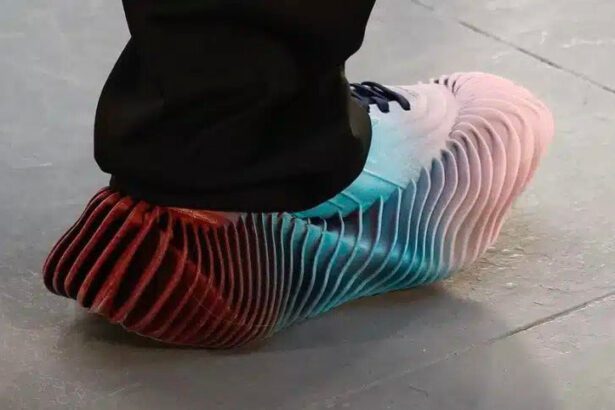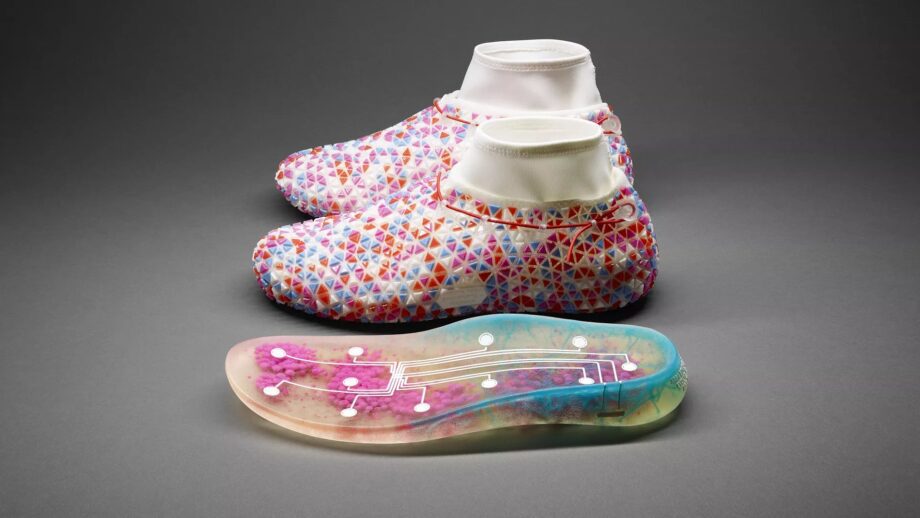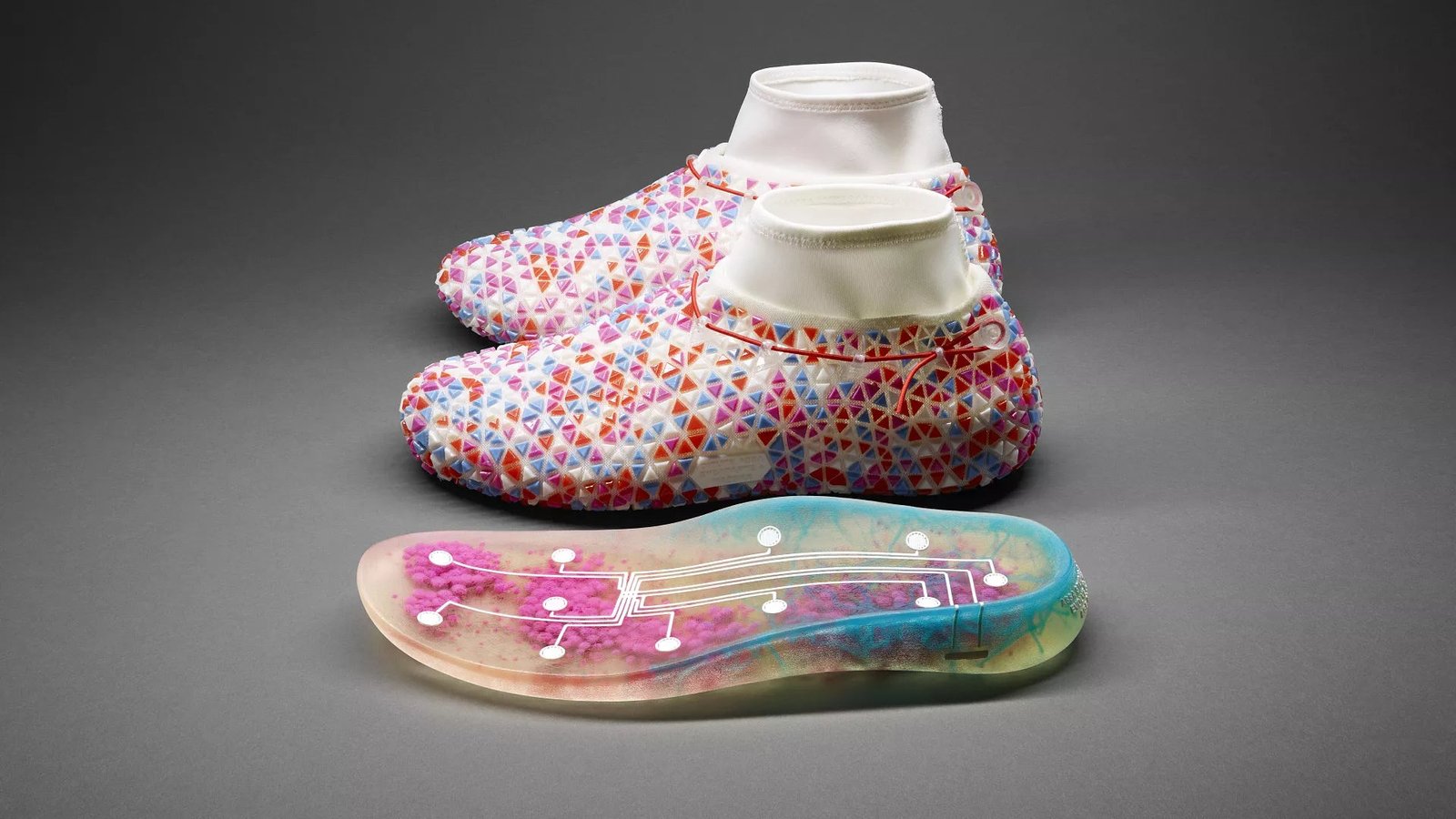
Are you tired of constantly wearing uncomfortable shoes that don’t fit properly? Keep updated because, in the upcoming years, these shoes made with 3D printing technology that adjust to your feet using data might be available for purchase.
Assa Ashuach, the designer behind a cutting-edge pair of 3D-printed shoes, claims they can learn from you and enhance their performance over time.
The Evolve AI shoes, showcased at the Dubai Museum of the Future, are at the forefront of innovation in science and design. The team behind these stylish shoes aims to make them available for users to purchase within the next three years.
“We all have our unique characteristics; some of us have smaller feet while others have larger feet.” Legs can vary in size, from thin and long to large. “This is a unique offering; these shoes are tailored for you,” stated Ashuach, a pioneer in 3D printing and design since the early 2000s.
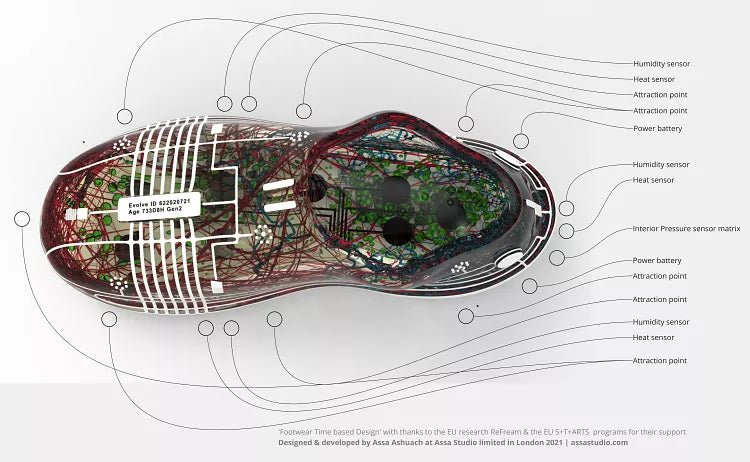
According to a study by Straits Research, a market research company, the global footwear market was worth about €360 billion in 2022.
However, a large number of the shoes available are still mass-produced and come in standard sizes. There are plenty of affordable and stylish shoes available that may not be suitable for all body shapes.
Can you explain how the shoes function?
The Evolve AI shoes feature a 3D-printed circuit board equipped with data-collecting sensors. Assa Ashuach’s studio, Stratasys, Haratech, and Profactor are just a few of the businesses involved in this EU-funded project.
The shoes analyze your foot pressure, weight changes, and sweat levels. Ashuach explains how the shoe provides support and molds to your foot.
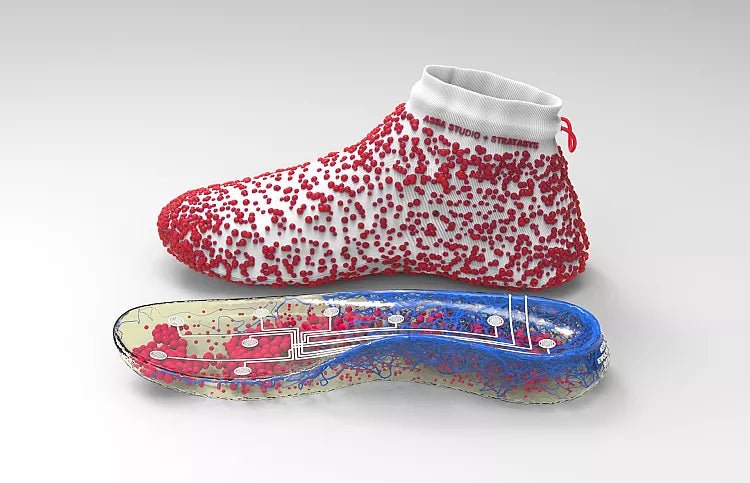
Ashuach predicts that users will wear a new type of shoe that gathers data to be transmitted to an advanced version of shoes stored in a virtual cloud. After sufficient data has been gathered, the shoes can be produced using 3D printing technology.
“You’d have to wait about a year before printing them, or even longer for a more customized version,” mentioned Ashuach, aiming to offer one range at approximately €235 and a higher-end range priced at €500.
3D printing is gaining popularity across different sectors, from healthcare to automotive. According to a Grand View Research survey, the booming global market had a value of about €18.8 billion in 2023, and projections show that it could grow by 23.5% by 2030.
Who will be wearing the shoes?
In order to wear the shoes, individuals are required to not only pay a hefty sum but also provide their personal information.
The shoes monitor users’ movements and gather data on their surroundings, including weather conditions.
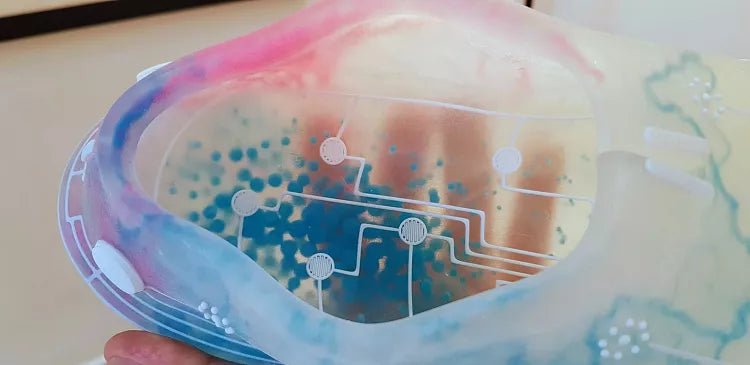
“You might find yourself with a shoe that adjusts its ventilation based on whether you’re in hot or cold environments.” Ashuach mentioned that the type of terrain can also be considered when adjusting the shoe’s weight.
According to the designer, there may be health benefits as well.
“By customizing shoes for diabetics, we have the potential to significantly enhance their quality of life, especially since they are prone to developing foot ulcers,” Ashuach explained.
An unconventional design
The Evolve AI shoes have a unique appearance when compared to traditional Nike AirForce trainers, which some may find unappealing.
This contributes to the aesthetic that Ashuach aims to achieve.
“I drew inspiration from the human skin for the design. You can observe veins on the shoe, for example,” he elaborates.
The cutting-edge design is also a key factor in the upcoming major objective for the designers: integrating regenerative materials that have the ability to enhance and repair themselves.
“The concept is that these veins could grow around your foot while you wear the shoes to provide support,” Ashuach said enthusiastically.


